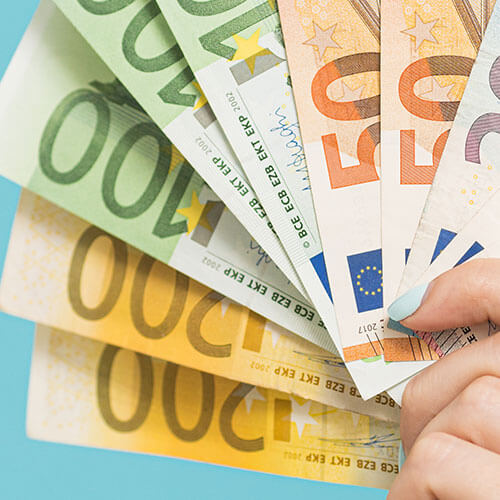If you’re new to the world of cryptocurrency, you will probably come across the word “fiat” a lot. Fiat currency, also known as fiat money, is money that has been approved as legal tender by a government. A fiat is merely a formally authorized or arbitrary order, according to the English Wiktionary and the Thesaurus definition of fiat.
While public trust in central banks and governments is what makes most fiat currencies valuable, trust in cryptocurrencies is predicated on the underlying technology – the blockchain. When you purchase anything using fiat currency, you are relying on a trusted authority, such as a government body, to act as a middleman and vouch for the currency’s value. In either case, the buyer and seller are certain that the currency will retain its value after the transaction.
Etymology and Usage of the Word “Fiat”
The origin of the word fiat is from Latin meaning “let it be done”. According to the etymological dictionary, this word is used in the opening of proclamations and commands in Medieval Latin, by which a person in authority gives sanction. It’s the third-person singular present subjunctive of fieri “be done, become, come into existence.”
Fiat’s meaning evolved over time, and by the nineteenth century, it was being used to express directives and commandments issued by all levels of government. The phrase “fiat in bankruptcy” became common as a way to depict official economic failures, and by the turn of the century, the contemporary term “fiat money” had emerged.
Another widespread usage of the word fiat is the name of the Italian car manufacturing company Fiat, which is also the acronym for Fabbrica Italiana Automobili Torino.
Fiat Currency
Fiat is a type of currency that’s issued and supported by a central bank and recognized by the government as a legal tender. This means that fiat currency has value only because the government sustains it; there is no use-value to fiat currency in and of itself.
Fiat currency is used by countries all around the world as a medium of exchange, to make investments, and to create savings. It includes all banknotes and coins issued by the government. Fiat currency doesn’t have an underlying value, instead, it derives its value through legal tender laws issued by the government, the demand and supply relationship, as well as the overall stability of the country’s economy. Fiat currencies are not backed by tangible assets such as gold or silver and have no intrinsic use-value. Rather, the value of fiat money depends on the economic power of their issuing governments.
Let’s break these factors down, starting with supply and demand. The supply of money is regulated by central banks, which determine how much money is required for the economy and print the amount of cash accordingly. The greatest risk is that if they print too much, it will cause hyperinflation, where prices will rise uncontrollably and destabilize the economy.
The stability of the government that issues a fiat currency, as well as trust in the central bank that oversees its supply, are essential for the fiat currency to gain widespread acceptance from the population. Here’s a closer look at the fiat currency system that is so ingrained in the modern economy.
What Makes Fiat Currencies So Valuable?
Originally, currencies were backed by tangible assets like gold and silver. However, fiat currency is based on the government’s trustworthiness and has no intrinsic value. Fiat money was presented as a substitute to commodity money, where commodities like gold or silver that had intrinsic value were used to make an exchange. However, since fiat currency is not a scarce resource like gold, central banks have much greater control over its supply, which gives them the power to manage economic variables such as money supply, liquidity, and interest rates.
Fiat currency has value simply because it is the government’s responsibility to maintain it through economic and financial stability, rather than the value of a commodity backing it. The material from which fiat currencies, i.e. coins or banknotes, are created has no relevance to the value of the money.
The value of fiat currencies is also determined by supply and demand. When the demand is high, prices increase and the currency appreciates (grows) in value. On the other hand, when a country imports more than it exports, there is less demand for its currency, and the currency depreciates, or loses value, over time.
The History of Fiat Money
The first country to adopt fiat currency was China in the 10th century. The Chinese province of Szechuan began supplying a paper currency to the market, and they were also first to permit fiat money to be exchanged for gold, silver, or silk. The fiat money system was finally established in the 13th century during the Mongol Yuan rule and the Ming eras, and the adoption of fiat currencies grew more popular. However, excessive expenditure and inflation led to the collapse of the Mongol Empire.
During the seventeenth century, countries in Europe including the Netherlands, Sweden, and Spain began adopting fiat currencies. However, fiat currencies failed miserably and depreciated so rapidly that by 1776, Sweden chose to abandon fiat money and return to using silver as a commodity-based currency.
Throughout the following centuries, the United States and France also began using fiat currencies, with varying success. By the 20th century, in 1933, the United States government ended the practice of using commodity exchange and replaced it with paper money. By 1972, under President Richard Nixon, the United States had completely abandoned the gold standard and made the irreversible move to the US dollar, abolishing the commodity-based economy. As a result, fiat currency has become widely used all across the world.
Pros and Cons of Fiat Currency
Not all economics experts and financial professionals advocate the usage of fiat currency, and most would argue that it has both benefits and drawbacks.
Pros
Fiat money is a useful currency if it can handle the functions required of a currency for a country’s economy to work properly. These functions include storing value, offering a unit of account, and enabling exchange. It has a good seigniorage, which means its production is far more affordable than the value it represents.
Fiat currencies grew to be popular in the twentieth century as central banks and governments attempted to protect their economies from the harsh effects of the recessions and depressions in the economic cycle. Because fiat currency isn’t a limited or fixed resource like gold, central banks have far more power over their supply of fiat currency, allowing them to control economic factors like liquidity and interest rates. The United State’s central bank, for example, has a dual responsibility to keep both the unemployment and inflation rates low. It achieves this by conducting national monetary policy by influencing credit and monetary conditions in the economy in order to maintain maximum employment, stable prices, and low long-term interest rates.
Cons
The collapse of economic systems in 2007 and the following economic crisis, when a large number of high-risk mortgages went into default, contributed to the worst recession in decades.
The crisis raised suspicions about whether governments could successfully use currency supply regulations to avoid depressions or severe recessions. Because it is not backed by any physical asset, the value of fiat currency is determined by the government’s fiscal policies and legislation. Inflation and instability in an economy and its fiat currency can result from poor monetary policy.
Due to the scarcity of gold, a currency backed by gold is typically more secure and stable than a fiat currency. Because of a fiat currency’s limitless supply, there’s a greater likelihood that it’ll cause bubbles and busts in the economic cycle, where a fast spike in price precedes an equally rapid drop in price.
Fiat Currency Alternatives
Almost every government today has a fiat currency as legal tender. While tangible assets can be bought and sold, they are seldom exchanged or utilized for ordinary transactions, and are more of a collectible or speculative asset.
Cryptocurrencies like Bitcoin have been developed in the last decade, and they challenge the dominance of traditional fiat currencies. Although cryptocurrencies are far from taking over the throne, they are increasingly used and accepted as valid tender by industry giants such as Microsoft, PayPal, and Starbucks.
A Few Words Before You Go…
All currency can be used as a medium of exchange. Fiat currencies promote economic growth by expanding market activities. They also allow consumers to invest and save money and therefore satisfy their long-term goals. Money used to be restricted to physical objects such as banknotes and coins, however, in today’s digital world, money is also kept as data in bank ledgers. The emergence of cryptocurrencies like Bitcoin has taken the digitization of money to a whole new level, where money is no longer tangible at all.



